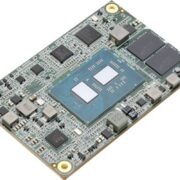In today’s digital age, technology is integral in virtually every industry, including healthcare. One such tech innovation is chiropractic software, a tool designed to streamline operations in a chiropractic clinic. Chiropractic software offers features that enhance productivity and improve patient care, from scheduling appointments to billing and patient data management.
If you’re wondering how this tool can benefit your practice, this blog post will explore five ways chiropractic software can help streamline your workflow. Read on to learn the details.
Table of Contents
1. Cloud-Based Application
The first significant advantage of chiropractic software is its cloud-based nature. Unlike traditional systems that require physical servers and hardware, cloud-based applications allow users to access the system anytime. You only need an internet-connected device, and you can easily manage your practice on the go.
This flexibility not only saves time but also enhances efficiency. You can promptly respond to patient inquiries, update records, or schedule appointments without being tied to your office desk. This accessibility is particularly beneficial for multi-location practices or those who offer telehealth services.
2. Automated Data Entry and Billing
Manual data entry is time-consuming and prone to errors. With chiropractic software, these tasks are automated, saving your team valuable time and reducing the risk of mistakes. The software can auto-populate fields for new patients, process payments, and generate invoices with just a few clicks.
Moreover, automated billing ensures that all charges are accurately recorded and billed, minimizing disputes and enhancing patient satisfaction. It also frees your staff to focus on more critical tasks, like patient care, instead of getting bogged down with endless paperwork.
3. Integrated Scheduling and Reporting
Effective scheduling and reporting are crucial for any healthcare practice. Chiropractic software often includes integrated scheduling tools that make booking appointments, sending reminders, and managing cancellations easy.
On the reporting side, chiropractic software can track patient progress, identify trends, and generate reports. These insights can help you make informed decisions about treatment plans and improve overall patient care.
4. Scalability
As your chiropractic practice grows and expands, the data you need to manage also increases. This can include patient records, treatment plans, appointments, and more. Chiropractic software is designed to be highly scalable to handle this growing data load. This means it can effortlessly accommodate the increasing number of patients and their associated data without compromising performance or efficiency.
With the scalability of chiropractic software, you can rest assured that your system will continue to meet the demands of your practice as it grows. You won’t have to worry about outgrowing your current system or investing in costly upgrades. This scalability enables you to focus on providing excellent patient care while knowing that your software can handle the expanding volume of data seamlessly.
5. Compliance and Security
Last but certainly not least, chiropractic software helps ensure compliance with healthcare regulations. It’s designed to meet standards such as HIPAA, protecting patient data and maintaining their privacy.
Moreover, automatic backups and secure data encryption ensure your patient information is safe. This is especially important during a system failure or security breach.
Harnessing the Power of Chiropractic Software for Enhanced Efficiency
In conclusion, chiropractic software is a valuable tool for any chiropractic practice. This software can significantly streamline your workflow by offering cloud-based access, automated data entry and billing, integrated scheduling and reporting, scalability, and robust security measures.
So, we encourage you to embrace the power of technology and let chiropractic software transform how you manage your practice. Thanks so much for reading.













Comments